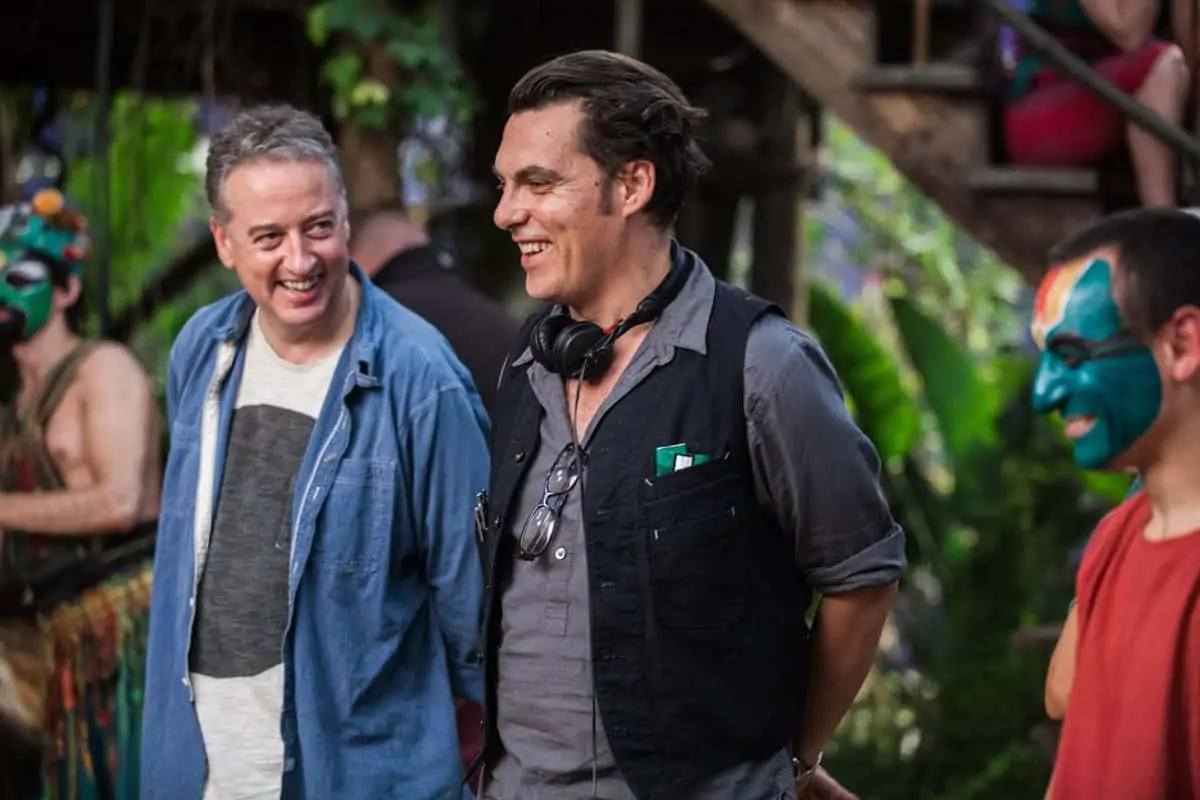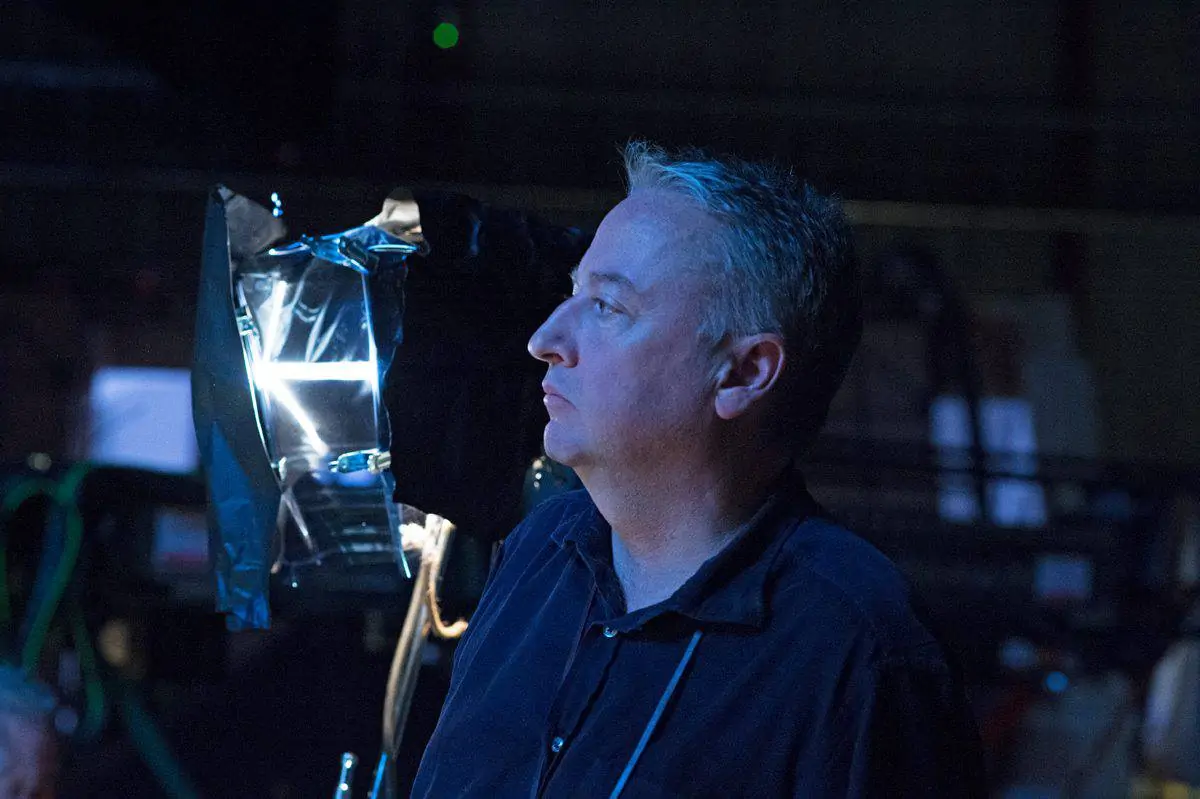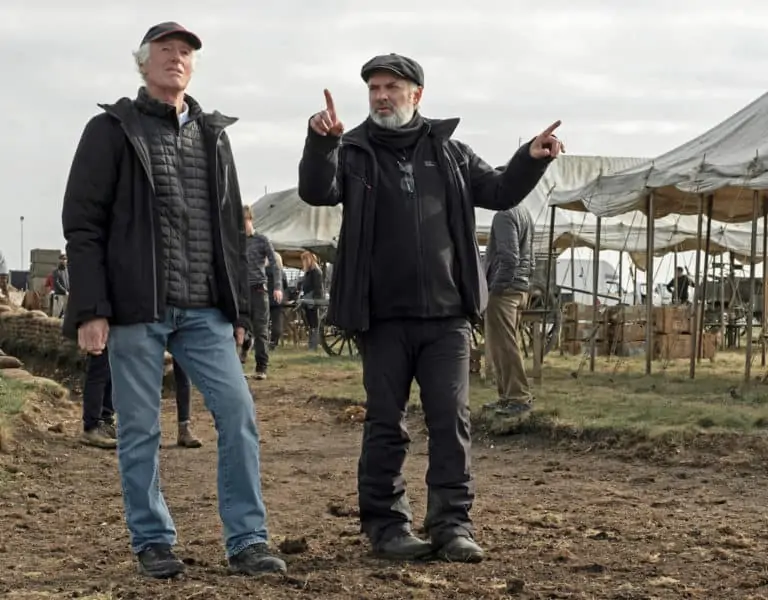Mind games
Seamus McGarvey BSC ASC / Nocturnal Animals
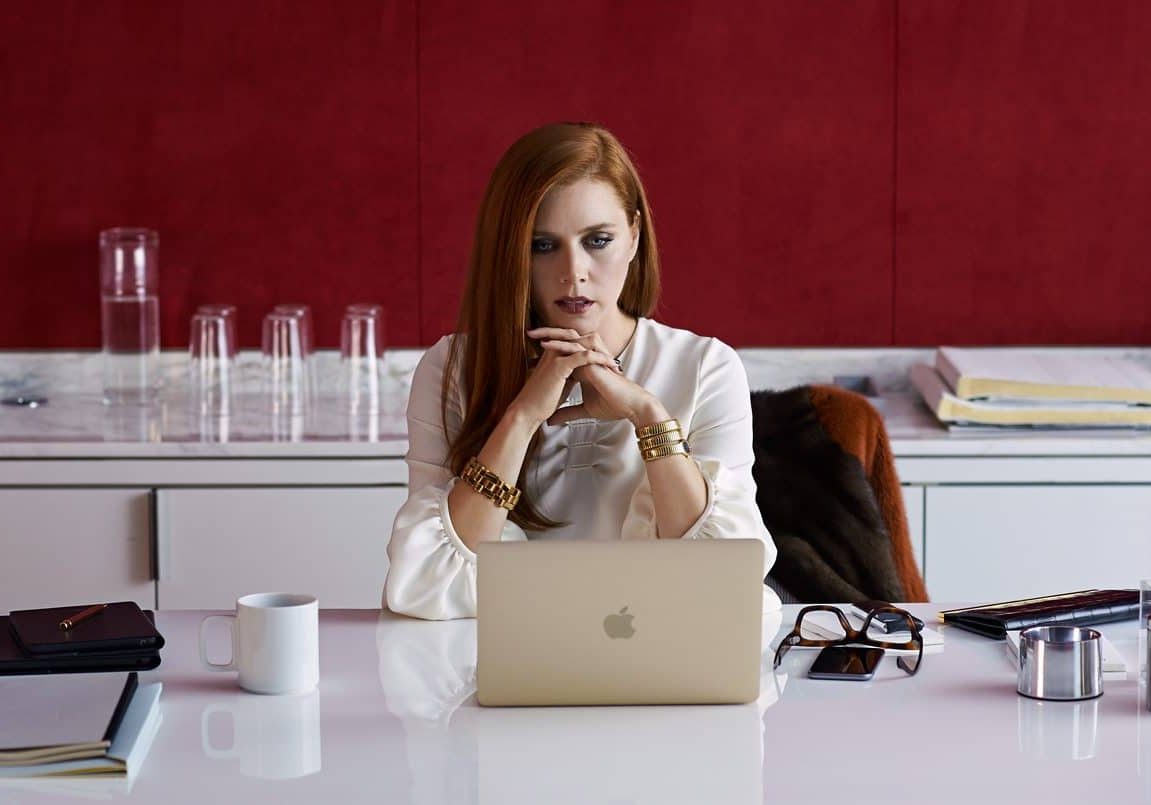
Mind games
Seamus McGarvey BSC ASC / Nocturnal Animals
BY: Ron Prince
Stand by. You are going to get weirded-out. Tom Ford’s psychological thriller Nocturnal Animals is coming to a screen near you soon. Amy Adams stars as Susan, an LA art gallery proprietor, who becomes haunted by a violent manuscript penned by her ex-husband Tom (Jake Gyllenhaal), which she decodes as being a veiled threat as well as a symbolic revenge tale.
The Focus Features/Universal Pictures production is Ford's follow-up to the much-praised and awarded A Single Man (2009, DP Edu Grau), and has enjoyed five-star reviews from critics since its debut at the 2016 Venice and Toronto Film Festivals. Adapted by Ford from Austin Wright’s 1993 novel, ‘Tony And Susan’, the movie has a binary-narrative – where powerful real and fictional stories run in parallel, sometimes overlapping one another. The pundits have heaped praise on Nocturnal Animals as a tour de force from Ford and cinematographer Seamus McGarvey BSC ASC, declaring it a “stylish and gorgeous, pitch-black thriller that will make you queasy with tension and regret.”
“It’s probably one of the best movies I have ever shot,” enthuses McGarvey, “it’s a great film, and I can’t wait for people to see it.” McGarvey supervised the seven week-shoot, starting in October 2015, spanning the Los Angeles conurbations of Malibu and Beverly Hills, as well as locations around the Mojave Desert, near Edwards Air Force Base, and Santa Clarita. This was the second of three films that he shot on 35mm film during 2015 – the first being Warner Bros. The Accountant (dir. Gavin O’Connor) with the Chloë Sevigny’s short Kitty following rapidly afterwards.
Ron Prince caught up with the cinematographer to discover more about the production and the cinematographer’s return to shooting celluloid, as he was reposing in his Tuscan home before jetting off to New York for his next big screen assignment.
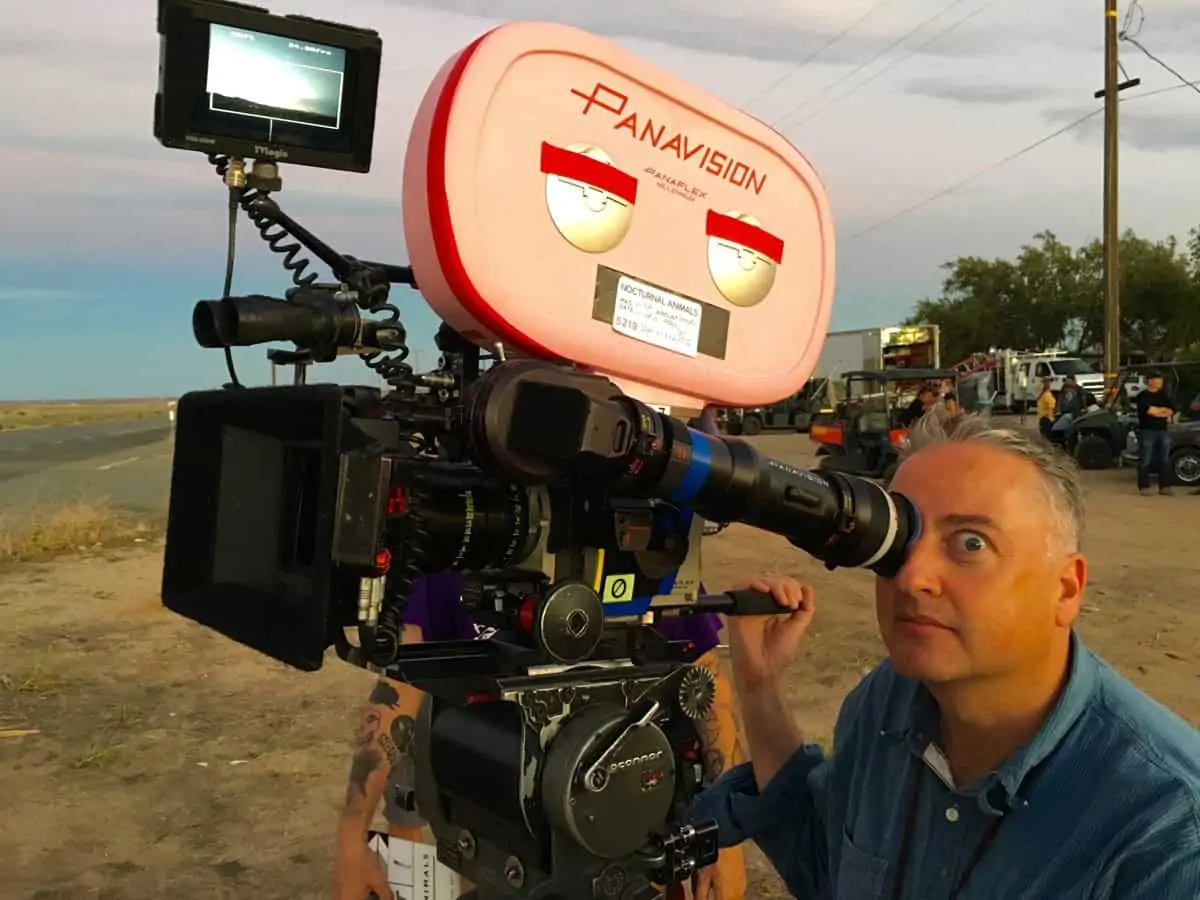
How did the script for Nocturnal Animals come your way, and what was your initial reaction?
SM: I had never met Tom before. He contacted me through friends and invited me to read the script. It was immediately intriguing and very scary. I sometimes find it hard to read scripts, as I disassemble them cinematographically as I go through, doing a sort of visual pathology of each scene. But this was an absolute potboiler that I read late one night and just could not put down from the second I picked it up. It was genuinely gripping, terrifying and haunting, because it’s psychological, in the head. It struck a cord with me about the choices you make in life that can sometimes lead to disaster. Nocturnal Animals is not just a visual movie, it’s psychologically layered too with the classic film-within-a-film device, told through the imagination as Susan reads the book and conjures the movie in her head. Cinematographically there was a lot in it.
Tell us about your early conversations with Tom Ford?
SM: We immediately got on very well. Tom is a genius with design and is visually articulate. His inferences and influences are manifold and that makes it easy when you are having a pictorial dialogue. I discovered he had a well-evolved mood reel – comprising movies, photographs, paintings and tear-sheets from magazines – that he had used during Cannes to generate funds for the movie, and which had helped to kickstart the film financing with Focus Features. So he had a really clear idea of the broad visual trajectory of the film to begin with. I like that, as it was not didactic or exclusive. I never felt I would get shoehorned into an aesthetic that I could not contribute towards. The opposite was true. We had great creative discussions right from the start to the very end of the project. Tom has a phenomenal attention to detail, and a tuned-up sense of achieving a cinematographic style, which is self-evident in Edu Grau’s fabulous work on A Single Man. Tom made sure that I very quickly started working closely with the production designer, Shane Valentino, and the three of us had a fruitful on-going dialogue. This build-up pays dividends. I like working in this sort of imaginative, inspirational atmosphere, engendered naturally by Tom, and it is one of the reasons I enjoyed this production so much.
What creative references did you consider?
SM: At the core of the movie there’s a wan, sterile, set-up in LA that co-exists with an extremely vivid film-within-a-film nightmare journey across the desert, which has a dark centre, spikey edges and unexpected kaleidoscopic U-turns. Tom’s mood reel was an important starting point for this colour palette, but he has an encyclopaedic knowledge and we pooled additional visual references. For the LA scenes we considered the stasis and sparseness of Bernardo Bertolucci’s The Conformist (1970, DP Vittorio Storaro). To bring in an element of the noir genre we looked at Night Of The Hunter (1955, dirs. Charles Laughton/Robert Mitchum, DP Stanley Cortez) and The Kill Off (1989, dir. Maggie Greenwald, DP Declan Quinn), which you might call deep American colour noir. We also liked the supernatural lighting and shadow in the paintings of Victorian artist Henry Fuseli. For the desert scenes we looked at how the landscape and characters were handled in masterpiece Westerns such as The Searchers (1956, dir. John Ford, DP Winton C. Hoch). And you can never rule out the influence of the great Alfred Hitchcock for interesting, spooky camera positions.
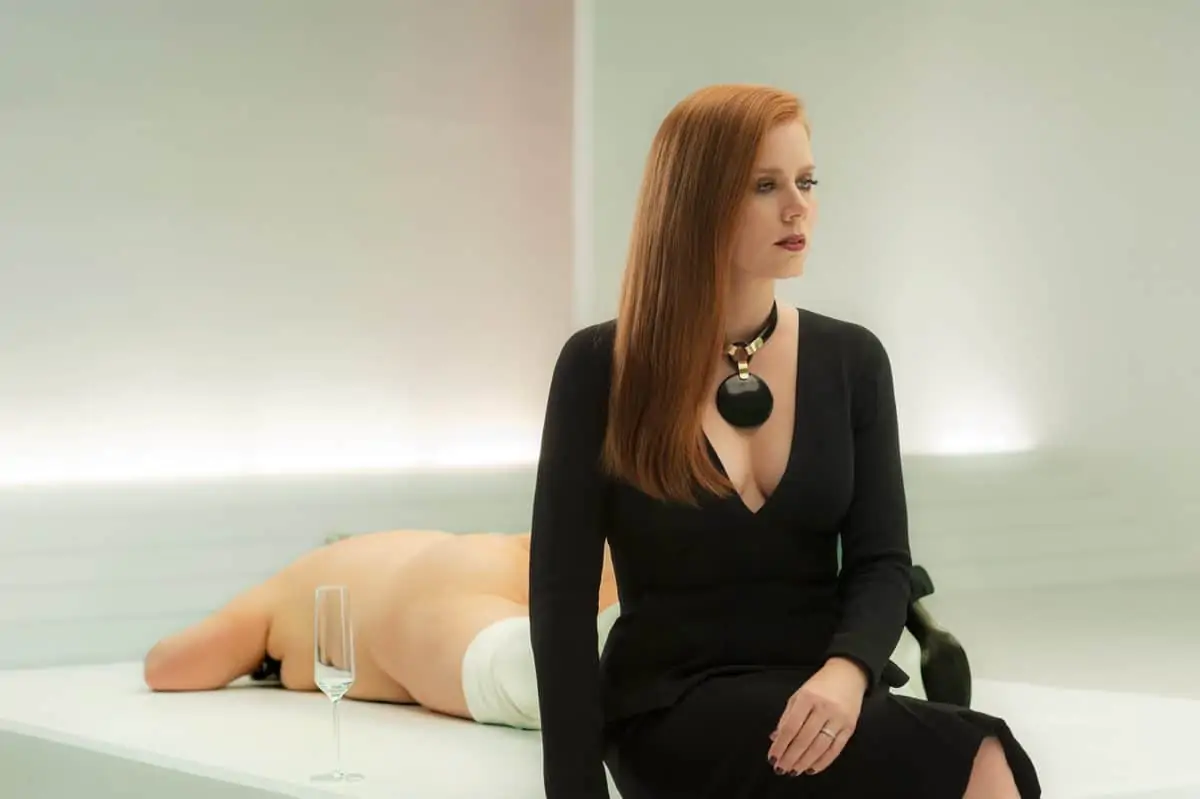
"At the core of the movie there’s a wan, sterile, set-up in LA that co-exists with an extremely vivid film-within-a-film nightmare journey across the desert, which has a dark centre, spikey edges and unexpected kaleidoscopic U-turns."
- Seamus McGarvey BSC ASC
How did you decide on the format, aspect ratio and lenses?
SM: A Single Man was shot on film, and both Tom and the producers had already made the decision to shoot Nocturnal Animals on film too. In fact, for the film-within-the-film, it was essential to shoot on film. I did consider large format digital, to get a clinical, sterile vibe to the LA scenes, but as we were shooting out of order, and going back and forth a lot, it was impossible to hire both film and video packages simultaneously, so that fell by the wayside.
Regarding aspect ratio, we wanted to shoot widescreen and to use the properties of the format to frame Susan in negative space to emphasise her loneliness, but to also use every millimetre of the frame to create dense and interesting compositions of the desert wilderness. You can also use the widescreen format in a binary way, and have two close-ups juxtaposed in the same frame.
As much of the movie was going to be shot at night – including a 15-page centrepiece scene on the highway, when the family get abducted by ne'er-do-well rednecks – I knew I would be at the edge of exposure. I would have preferred Anamorphic, but the lenses are not fast enough to give me enough stop at night, and I didn’t want to give my first AC a heart attack shooting wide open. I also wanted the keep the edges of frame sharp too.
So with all of that in mind, we shot spherical 2.35:1 with Panavision Primo Primes for most of the show, and with a couple of Primo zooms – the 19-90mm and 24-275mm – for the highway car chase sequence.
Which film stocks did you choose?
SM: I used two stocks – Kodak 5274 200T and Kodak 5219 500T – both of which I love. Knowing that we’d be shooting at night, probably 85% of the movie, I wanted the fastest stock I could get. Unlike digital, with night-time photography on film, you have complete control of the light. You paint the negative out of a black canvas in an additive, artistic process. For the colour noir style it was the perfect stock for rendering the contrast of the pronounced lighting, and for the saturated red and deep green colours that we enhanced with the liberal use of gels. On the dark highway scene, where I used Bebe lights to illuminate over a mile of road, the 5219 gave me enough T-stop to achieve exactly the eerie levels of obscurity I intended. It also supported the misty and anaemic look of Susan’s spartan Los Angeles world, and it combined nicely too with Tiffen Glimmerglass, when I softened the image and the actors for the optimistic flashback sequences of Susan and Tom in their college days.
How did you feel about coming back to shoot on film again?
SM: The last movie I shot on film was Anna Karenina (2012), with Joe Wright, and it was wonderful to exercise my photographic muscles again. There’s a risk and a skill in using celluloid, but the pay-off is massive. There’s a beauty in the deep, inky blackness of a properly exposed negative, especially at night, that you just don’t get with digital, where the black is more of a charcoal. I love the grain in the celluloid image too. On a practical level, with digital you can get a disparate myriad of voices around you as your lighting and framing are displayed on multiple monitors in different E-Z Up Tents. This can diffuse the effort and enterprise of the cinematographer before you’ve even begun. But with film it’s more focussed and concentrated, and results rest with you. It was wonderful to compose the image through the lens, through the eyepiece, rather than have to do that on video monitors.
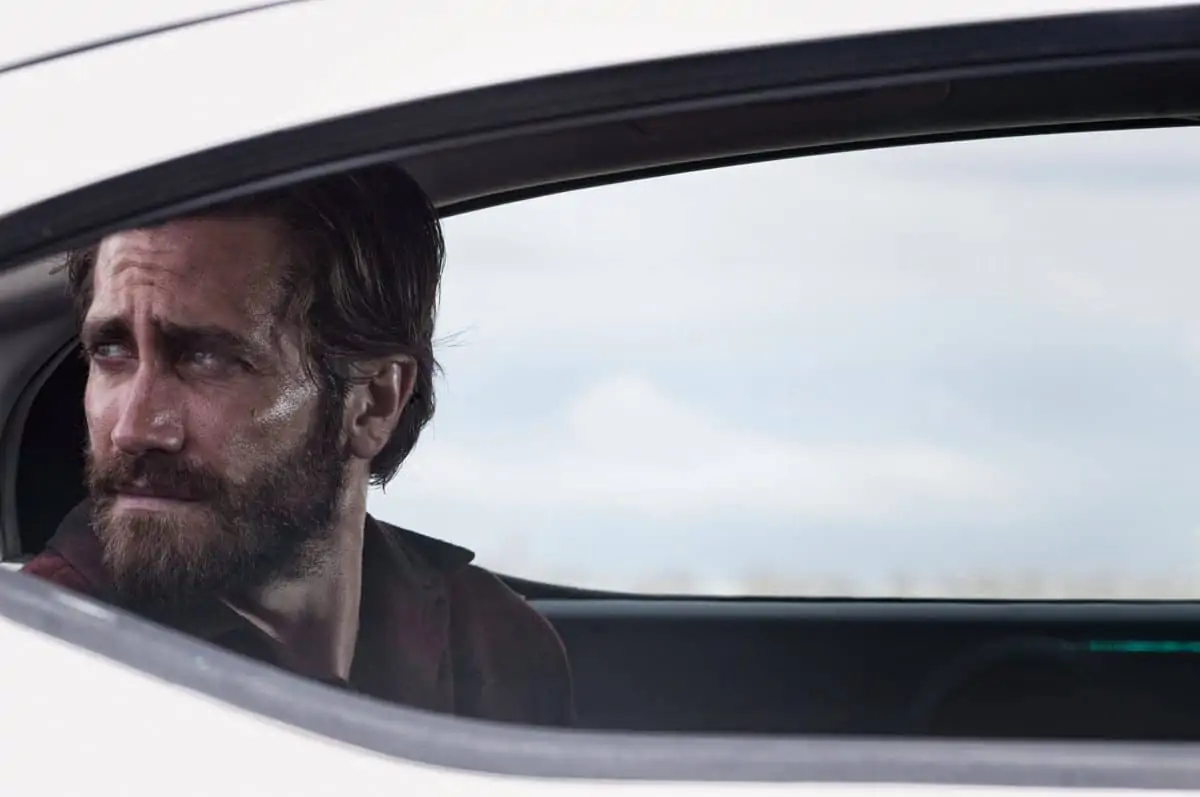
What was your strategy for moving the camera?
SM: Susan’s world is very spare, controlled and metric, a brittle symphony of black, grey and dark brown and we kept the camera pretty static. When she reads the script, we played with close-ups and a Hitchcockian style of shots looking down from a higher perspective to bring in a sense of suspense. As things become more horrific and more psychologically threatening, we gave a menacing sense of her being observed using long shots, through doorways and windows. We had several sequences – such as the rape and abduction scenes – where I wanted a more erratic, unstable urgency into the framing, so we went with two handheld cameras on these occasions. It was great for me to get back into the saddle again on B-camera, and I am thankful to the union for granting me a special dispensation.
Who were your crew?
SM: Considering this was a fairly low-budget independent movie, I was lucky to assemble a crack team. My A-camera operator was David Emmerichs, with first AC Harry Zimmerman. When I operated B-camera, Richie Masino was my very able first AC. My gaffer was Chris Napolitano, with Herb Ault as my key grip. They are all brilliant people, who have worked on some amazing movies with wonderful directors and DPs. Although it was a tough shoot physically, we all admired Tom as our talented leader.
How did you survive the night-time working hours?
SM: Coffee. I am not so fond of night shoots – I should have clocked that from the title of the movie – but it was summertime and thankfully our nights were short. I’m photosensitive, and I normally wake up with the light. On the shoot, I would typically get to bed by 6am, rise by nine or ten in the morning, and be on-set by 4pm to start prep. We would then shoot in the lovely crepuscular light at the end of the day and into the night. We were doing continuous nights, without a break for lunch, which was good as it can be hard to get going again after you get food in your stomach. But once you get into a rhythm, over a long period, night work is absolutely fine. I have to say though that whilst the desert is blistering by day, the temperature plummets as the sun goes down, making the nights really, really cold.
Where did you do the DI grade?
SM: The DI was conducted by Siggy Ferstl from Company3 in LA, who flew in to London to work with Tom. However, I was in the thick of production on Life (dir. Daniel Espinosa) and was unable to attend for the duration of the sessions. I managed to pop in on a number of evenings to see the progress. Although I’m keen that the cinematographer must be in this part of the photographic process, the difference on this occasion was that due to my great rapport with Tom, who is just so visually astute, with a great sense of taste and colour, I knew the movie was in great hands.
There’s a lot of Tom in this film. It’s a great movie. I hope that when people leave the cinema after watching it, they will appreciate what an amazing director he really is.

